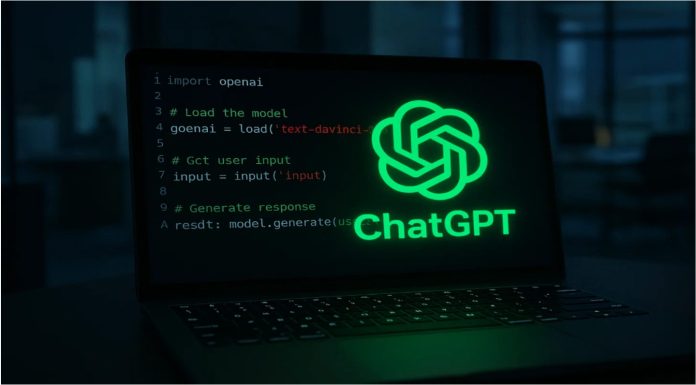ChatGPT and Claude tested with a single code-review prompt that catches what humans miss
I’ve worked with developers who can spot a security flaw from a mile away and others who ship “working” code that hides performance landmines. When I started running my team’s commits through a one-line prompt in ChatGPT software, the feedback wasn’t just faster — it was catching edge cases, architectural missteps, and outdated dependencies before we even pushed to staging.
And when I ran the same prompt through Claude language model, it layered in explanations that junior devs could actually understand without feeling like they were being roasted.
The exact one-line prompt
This is what I type into ChatGPT software or Claude:
“Review this [language/framework] code as a senior full-stack engineer. Identify bugs, security vulnerabilities, performance bottlenecks, outdated patterns, and suggest modern best practices with code examples.”
That’s it. No multi-paragraph instructions. No “act as if” roleplay fluff. Just clear scope and deliverables.
Why it works so well
Most AI prompts fail at code review because they’re too vague (“Check this code”) or too narrow (“Look for bugs”). By explicitly listing categories — bugs, security, performance, patterns, best practices — you push the model to run multiple passes on the code instead of a single scan.
ChatGPT software excels at spotting logical errors and suggesting performance tweaks.
Claude language model is strong at explaining why a change is needed and showing side-by-side fixes.
Real-world test: 60 seconds to catch what we missed
We fed a React component into both models.
Team review missed:
- An unescaped user input in a query string.
- A deprecated lifecycle method (componentWillReceiveProps).
AI review caught:
- Both of the above.
- Suggested replacing manual DOM manipulation with React refs for maintainability.
- Flagged an API call missing proper error handling.
Time to review: ~60 seconds per model.
Going beyond bugs — architecture and maintainability
When you run this one-line prompt on a large codebase, you get feedback on:
- Redundant dependencies.
- Overly complex functions that should be split.
- Opportunities to use built-in framework features instead of custom utilities.
Prompt tweak for architecture focus:
“Review this codebase as a senior full-stack engineer with a focus on maintainability and scalability. Identify refactoring opportunities, architectural risks, and suggest design pattern improvements.”
Using Chatronix to run multi-model reviews
I don’t rely on just one AI’s opinion. Inside Chatronix, I paste the same code and run the one-line prompt through:
- ChatGPT finds syntax and logic errors.
- Claude explains fixes in clear, teachable language.
- Gemini checks for emerging best practices.
- Grok chatbot gives conversational commentary developers love reading.
- Perplexity AI verifies security recommendations.
Side-by-side results let me merge the best suggestions. With 10 free requests, turbo mode, Chatronix turns review from a bottleneck into a force multiplier. Try it here: multi-model AI workspace.
Prompts to expand the review process
Security deep dive:
“Review this code focusing solely on security vulnerabilities and attack vectors. Suggest mitigations with examples.”
Performance optimization:
“Analyze this code for CPU, memory, and I/O bottlenecks. Suggest optimizations with benchmarks where possible.”
Refactor suggestions:
“Review this code for readability and maintainability. Propose refactors that reduce complexity without changing functionality.”
Table: Human-only vs AI-augmented review
| Criteria | Human-Only Review | One-Line Prompt + Multi-Model AI |
| Speed | 1–3 hours | 2–5 minutes |
| Bug detection | High, but human blind spots | Broader, catches overlooked issues |
| Security coverage | Varies by reviewer | Consistent, covers OWASP top 10 |
| Documentation feedback | Rare | Frequent, with examples |
| Cost | Developer hours | Minimal once integrated |
Best practices for AI-assisted code reviews
- Always pair with human judgment — AI is fast, but context matters.
- Run on smaller chunks — Large dumps reduce accuracy.
- Keep scope clear — Specify what you want reviewed.
- Cross-check models — Merge suggestions from multiple AIs.
- Update prompts regularly — New best practices emerge fast.
Why dev teams should adopt this now
Code review is often the bottleneck between “it works” and “it’s production-safe.” With this one-line prompt running across multiple AI models in Chatronix, you:
- Catch more issues earlier.
- Educate juniors without extra meetings.
- Free up senior devs for architecture and innovation.
For freelance devs, it’s a way to add premium value to every delivery. For teams, it’s a quality insurance policy that costs almost nothing once set up.



 Bitcoin
Bitcoin  Ethereum
Ethereum  Tether
Tether  XRP
XRP  USDC
USDC  TRON
TRON  Lido Staked Ether
Lido Staked Ether  Cardano
Cardano  Avalanche
Avalanche  Toncoin
Toncoin  Solana
Solana